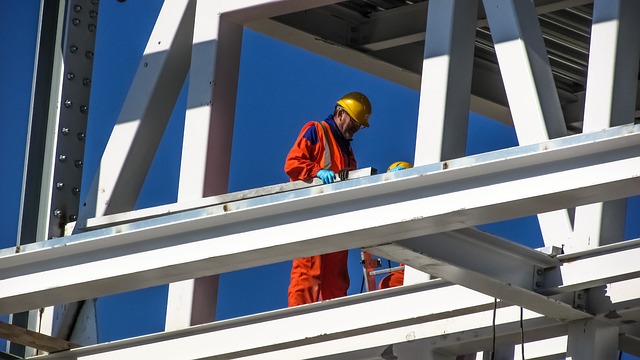Advanced technologies like GPR, electromagnetic induction, and laser scanning have revolutionized high-precision utility locating. These tools enable the creation of detailed 3D models of subsurface utilities, enhancing safety, efficiency, and cost savings in infrastructure projects. Integrating GPS, GNSS, LiDAR, and GPR ensures accurate utility location services, meeting the demand for professional utility locating solutions. These innovative methods replace manual methods, streamline operations, reduce damage risk, and promote effective infrastructure management across various sectors.
In today’s world of complex infrastructure development, precise underground mapping and utility location are paramount. Innovative tools like advanced GPS/GNSS technologies, LiDAR, Radio Detection (RD), Ground Penetrating Radar (GPR), and electromagnetic location techniques have revolutionized high-accuracy utility locating.
This article explores these cutting-edge methods, their applications in professional services, and the profound impact on enhancing safety, efficiency, and infrastructure management through accurate subsurface utility detection. From mapping critical utilities to minimizing damage during construction, these advancements are reshaping how we interact with our underground landscape.
Advanced Technologies for High-Precision Underground Mapping
Advanced technologies have significantly revolutionized the field of high-precision utility locating and accurate utility location services. Traditional methods of manual digging or surface-based detection are being replaced by innovative solutions that offer unprecedented levels of accuracy in underground mapping. These advanced utility detection tools leverage cutting-edge technology, such as ground-penetrating radar (GPR), electromagnetic induction, and laser scanning, to create detailed 3D models of subsurface utilities.
Precision underground mapping has become a game-changer for professionals in the utility locating industry, ensuring safe and efficient infrastructure projects. High-accuracy utility scanning systems enable accurate identification and documentation of buried pipelines, cables, and other critical utilities. These professional utility locating solutions not only enhance safety by minimizing the risk of damage during excavation but also streamline project timelines and reduce costs associated with unexpected utility strikes.
– Discuss the latest advancements in GPS and GNSS technologies, LiDAR, and other mapping tools that enable precise underground mapping.
The latest advancements in GPS and GNSS (Global Navigation Satellite System) technologies have revolutionized precision underground mapping. These sophisticated systems, coupled with LiDAR (Light Detection and Ranging) technology, offer unprecedented accuracy in identifying and mapping utilities beneath the surface. LiDAR sensors emit laser pulses to measure distances, creating detailed 3D models of the subsurface environment. This enables professionals to conduct high-accuracy utility locating, ensuring safe and efficient excavation projects.
Advanced mapping tools, including ground-penetrating radar (GPR) and advanced scanning techniques, further enhance accuracy in utility detection. GPR uses electromagnetic waves to penetrate the ground, revealing the location and depth of underground utilities. Integrated with other data collection methods, these technologies provide comprehensive subsurface utility detection, catering to the growing demand for professional utility locating solutions. High-precision utility locating and accurate utility location services are now feasible, benefiting construction, engineering, and infrastructure sectors by minimizing damage risks during excavation.
Innovative Tools for Accurate Utility Location Services
Innovative tools are transforming the landscape of accurate utility location services, revolutionizing how we map and detect utilities beneath our feet. Traditional methods often relied on manual, time-consuming processes, leaving room for errors. However, advanced utility detection technologies offer a new era of precision.
Through high-precision utility locating techniques, professionals now employ sophisticated sensors and scanning equipment to create detailed subsurface utility detection maps. These tools enable faster, more reliable identification of underground lines, pipes, and cables, ensuring safe excavation and reducing the risk of damage during construction projects. By leveraging such advanced utility detection solutions, industries can streamline operations, enhance safety, and promote efficient infrastructure management.
– Explore the use of Radio Detection (RD), Ground Penetrating Radar (GPR), and electromagnetic location techniques to identify and map utilities beneath the surface.
In the realm of high-precision utility locating, advanced tools like Radio Detection (RD), Ground Penetrating Radar (GPR), and electromagnetic location techniques are transforming how we identify and map utilities beneath the surface. These innovative technologies offer unparalleled accuracy in underground mapping, enabling professionals to swiftly and safely detect critical infrastructure such as gas pipelines, water mains, and electrical cables. With their ability to penetrate various materials, these methods provide comprehensive data that aids in meticulous planning and execution of construction or renovation projects.
Electromagnetic location techniques, for instance, leverage the natural electromagnetic fields generated by utilities to pinpoint their exact locations. RD and GPR further enhance this capability by using radio waves and radar pulses respectively, which can detect subtle variations in the earth’s surface, revealing the presence and depth of buried utilities. Such accurate utility location services are indispensable for construction managers, engineers, and utility companies seeking reliable, professional utility locating solutions that minimize disruptions to underground infrastructure and ensure safe, efficient project execution.
In conclusion, the evolution of innovative tools and technologies has revolutionized high-accuracy underground detection. Advanced GPS and GNSS systems, LiDAR mapping, Radio Detection, Ground Penetrating Radar, and electromagnetic location techniques now enable professionals to offer precise utility locating services and accurate underground mapping. These state-of-the-art solutions ensure efficient, safe, and reliable subsurface utility detection, catering to the critical needs of various industries. With these technologies, navigating complex underground landscapes is more accessible, fostering a safer and more organized infrastructure environment.
